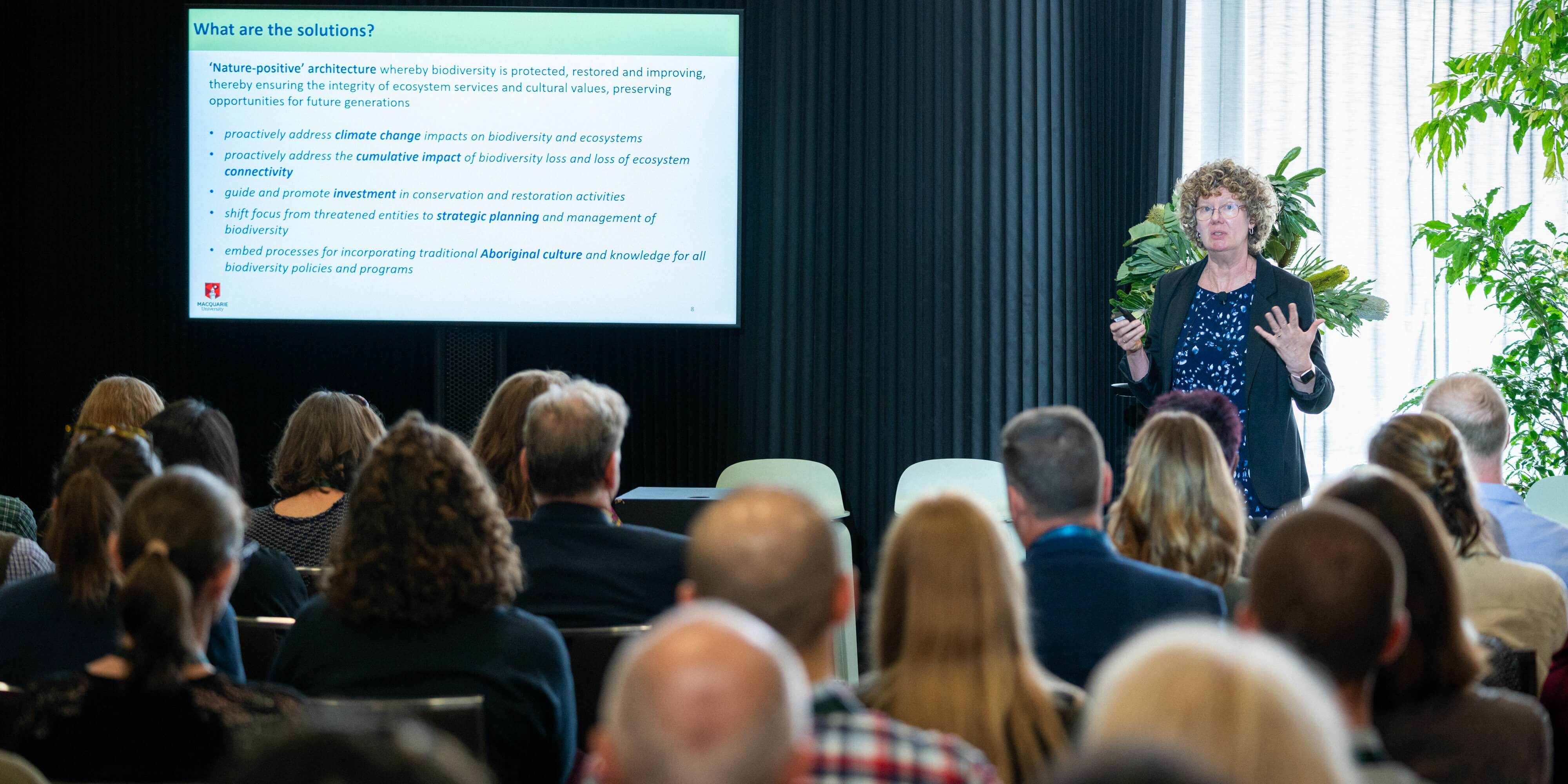Bularr-Gulga Watuun – an orchid known as the ‘two-tailed white one’ in the Gathang language of the Worimi people – is just one of thousands of Australian species under threat.
It's too hard to put in words the emotions of being up there and on your ancestor's Country, walking in their footprints and knowing that they are looking over you and you are doing the practices that they did.
Worimi Elder Aunty Michelle Perry
In spring 2023, 60 Worimi people, led by Aunty Michelle Perry, gathered for what is believed to be the first Community-led cultural burn in Barrington Tops since colonisation.
Nearly two hectares of snow grass on Michelle’s grandmother’s Country was regenerated as part of the Grow, Harvest, Heal project.
Speaking at the 2023 AdaptNSW Forum, Michelle shared how Grow, Harvest, Heal connects Aboriginal people to language, culture and Country, and recognises the role of traditional knowledge in caring for Country over tens of thousands of years.
As part of the project, a vulnerable orchid is being protected and sustainably harvested. With its purple-veined heart and ivory petals, Bulgarr-Gulga Watuun was recently renamed in the local Gathang language to reflect its history, Michelle said.
Sometimes called the ‘double-veined donkey orchid’ or Diuris venosa by botanists, Bulgarr-Gulga Watuun is a target species in the NSW Government’s Saving our Species strategy. But without new conservation methods – backed by ancient knowledge – its future is uncertain.
State of Environment report
According to the Australian Government’s State of the Environment report, 1,385 plant species, 533 animal species and 88 ecological communities are listed as ‘threatened’. This includes 21% of all Australian mammals.
“Ecosystems are in trouble,” Distinguished Professor Michelle Leishman from the Smart Green Cities Research Centre at Macquarie University told the 350-strong crowd at the 2023 AdaptNSW Forum.
Land clearing has resulted in a “patchy network” of disconnected habitat and, as the State of Environment Report notes, more than 30% of original native habitat in New South Wales has been “substantially altered”.
More than 650 pest animals have been introduced to Australia; pests and weeds threaten over 70% of vulnerable species in NSW; and feral cats and foxes kill seven million native Australian species every day.
The solution is to “shift our way of thinking to a 'nature positive' view of the world.”
Nature positive refers to a state where human activities have a beneficial impact on the natural environment, promoting biodiversity, ecosystem health and resilience. Nature positive actions don’t just minimise harm to ecosystems but actively restore and regenerate them – which is exactly what Grow, Harvest, Heal aims to do.
Nature positive actions include “proactively addressing climate change impacts on biodiversity and ecosystems” and the “interconnectivity of issues” through direct investment, strategic planning and by incorporating traditional Aboriginal culture and knowledge into biodiversity programs,” Michelle said.
Climate adaptation through Caring for Country
First Nations peoples are among the world’s most important land managers. They own or manage 25% of the world’s lands that contain 80% of the world’s species. This is where the decline in biodiversity is the slowest, and where species are most likely to survive.
Grow, Harvest, Heal is one practical project showing how Indigenous knowledge and ‘nature positive’ thinking can change the way Australia cares for Country, the panel agreed.
At Barrington Tops, the initial plan is to trial sustainable tuber harvesting as a conservation management tool, said Luke Foster, a Senior Threatened Species Officer with the NSW Department of Planning and Environment.
Luke is leading the project on behalf of the NSW Government, and noted that the benefits of Grow, Harvest, Heal are manifold and multiplying.
The core aim of the project [Grow, Harvest, Heal] was to reawaken ‘sleeping knowledge’ from the world's oldest living culture and to demonstrate shared pathways within Community and between cultures to restore endangered species by reconnecting to their original food story.
Luke Foster, Senior Threatened Species Officer, NSW Department of Planning and Environment
Barrington Tops is the headwaters of every major river in the Hunter area. “Looking after the headwaters of our river systems is critical to give biodiversity and people the best chance of withstanding changes to climate,” Luke said.
Grow, Harvest, Heal is also working with the Jerringja Community on the South Coast to protect a rare cluster of magenta lilly pilly, and has partnered with Community and archaeologists to map the trees and the cultural items among them.
The first gathering at Barrington Tops was a chance to share culture, language and stories, Luke added. There was much “talking, listening, good food, lots of laughing, plenty of head knocking on rough tracks, counting orchids, getting chased by horses and planning for the future”.
For Aunty Michelle Perry, being back on her grandmother's Country was a “very emotional experience”. The motif of Bularr-Gulga Watuun, the orchid called the “two-tailed white one”, is now emblazoned on Community members’ shirts, serving as a reminder of this precious natural asset.
AdaptNSW Forum 2023
The 2023 Forum AdaptNSW, ‘navigating uncertainty together', attracted 350-plus attendees who heard from more than 85 presenters across 30 breakout, panel, workshop and keynote sessions in December 2023. Check out the program highlights and watch recordings of key sessions.
